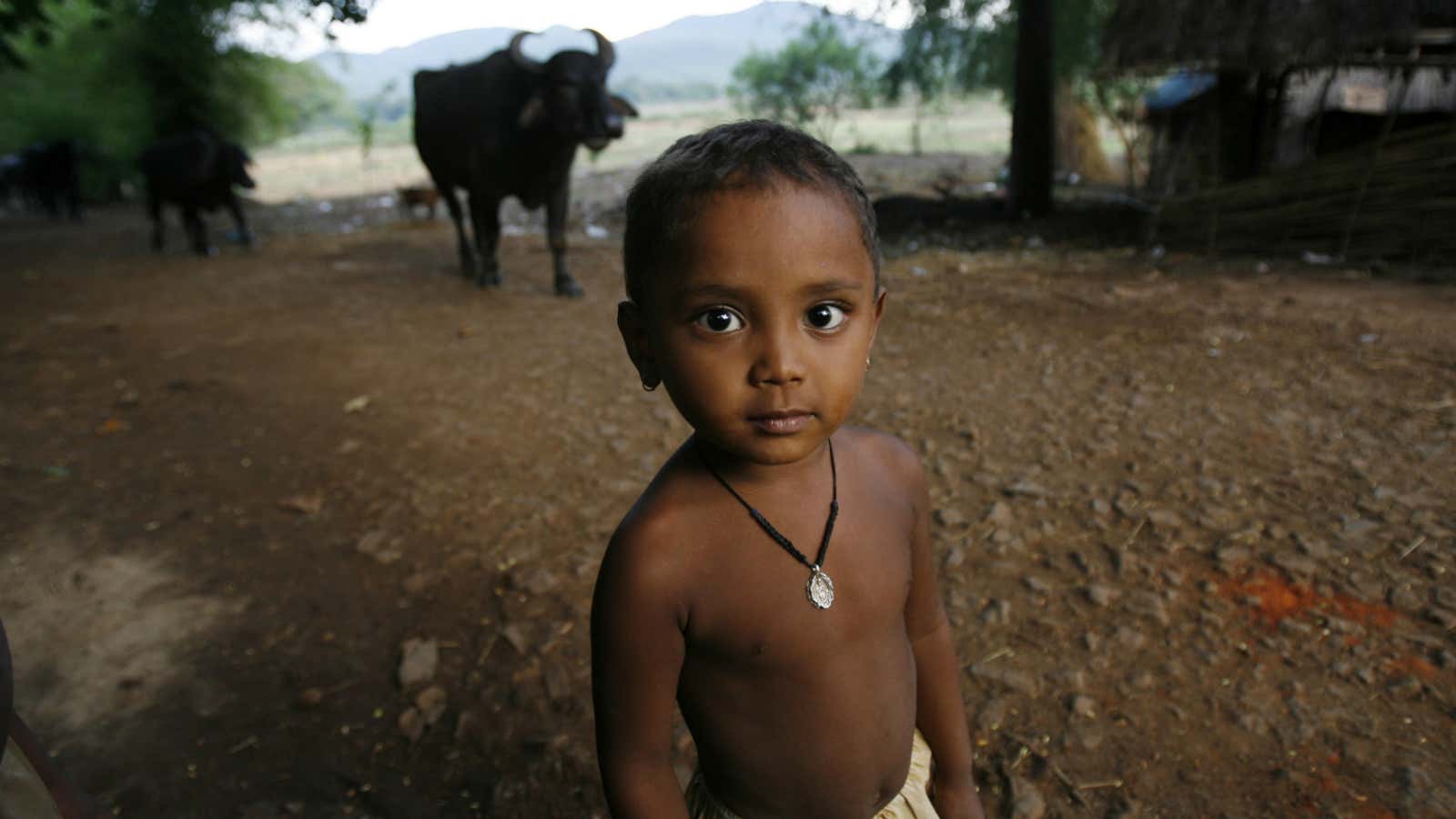After over a decade of research & development, on March 26, India launched a vaccination campaign employing Rotavac, the word’s cheapest vaccine against rotavirus—containing a strand of the virus isolated, manufactured and tested in India.
Rotavac, which was recommended by the health ministry in 2014, will be administered to children between six and 10 weeks old as part of a government programme launched in Odisha—followed by Haryana, Himachal Pradesh, Andhra Pradesh.
Diarrhea is the world’s third-biggest killer of children under five. Despite a steep decline in child mortality in India, it still kills nearly 300,000 children in that age group every year. Of those, according to the World Health Organization (WHO), over 100,000 are due to rotavirus infection.
The Rotavac campaign is aiming to curb those deaths in an effective, affordable way.
There is no specific cure for rotavirus-caused enteritis, other than reintegration of fluids. But vaccines have been available for several years and, in countries such as the US and El Salvador, have reduced the numbers of hospitalisations by up to 96% (pdf, p.21).
Till now, there were two options: Rotateq, produced by Swiss pharmaceutical giant Merck, and Rotarix, made by British GlaxoSmithKline. While both are commercially available in India, their cost—over Rs2,000 for a full immunisation course—made them out of reach for too many.
As Mathuram Santosham, professor of international health at Johns Hopkins University, told Quartz , “they were available, but not to the poor,” who are by far the most exposed.
On the other hand, Hyderabad-based Bharat Biotech’s Rotovac is a game changer. At Rs. 60 (about $1) per dose, it is affordable enough to be adopted in government campaigns. And, though it is not the country’s first indigenous vaccine, it still represents a milestone for Indian healthcare.
Trials have shown that Rotovac compares with other vaccines in terms of efficacy, and WHO international approval and recommendation is expected in 2017. After that, other countries—especially developing ones, for which vaccination at a lower cost is key—might start importing it from India. The vaccine is available in the US market at $213-226.
“The technology [of Indian pharmaceutical companies] used is not different from foreign multinationals,” Santosham told Quartz, though “Indian companies are very aware that cost can be a limiting factor.” In this sense, the success of Rotovac proves that it is indeed possible to drive pharmacological innovation at contained costs, and it stands as an interesting case study for future vaccines and drugs to be developed in the country.
